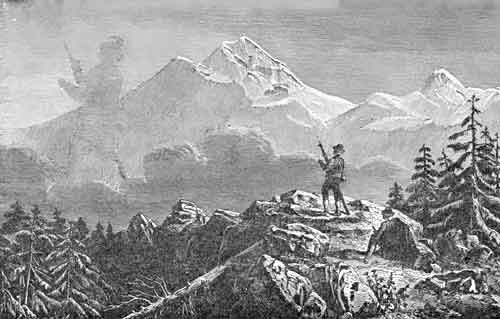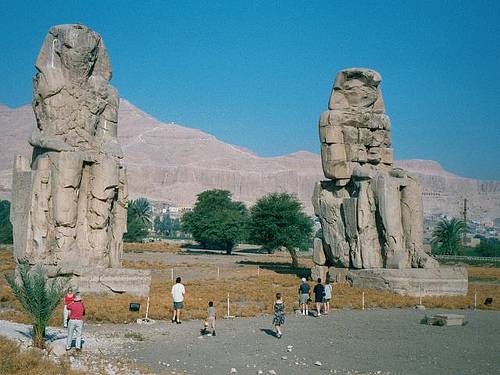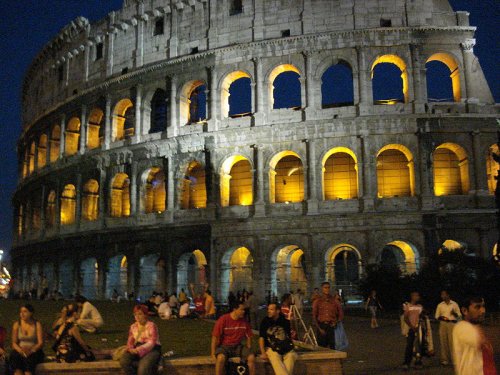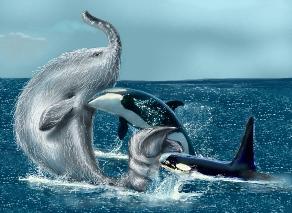In the dusty street of an Old West mining town, a classics professor was stunned to find a post bearing this inscription:
TOTI EHORS ESTO
What was the post for?
In the dusty street of an Old West mining town, a classics professor was stunned to find a post bearing this inscription:
TOTI EHORS ESTO
What was the post for?
En route from Vancouver to Australia on Dec. 30, 1899, the captain of the S.S. Warrimoo spotted a once-in-a-lifetime opportunity. At midnight, he stopped the ship at the intersection of the international date line and the equator.
At that moment, the ship was straddling two different hemispheres, days, months, years, seasons, and centuries, all at the same time. By passing between the bow and the stern, passengers could stroll between winter and summer, north and south, and the 19th and 20th centuries.
The downside: For the Warrimoo, Dec. 31 disappeared entirely.
(Roberto Casati points out that if you return to this point on June 21 and lie down on the deck, at midnight your left hand will be in summer, your right hand in spring, your left foot in winter, and your right foot in autumn.)

A gigantic figure haunts the Vosges Mountains, known by the name of “The Spectre of the Brocken.” The ignorant peasants were, in former times, in great fear of it, thinking it a supernatural being, and fancying that it brought upon them all manner of evil. And it must be confessed it was a fearful sight to behold suddenly upon the summit of a lofty mountain an immense giant, sometimes pointing in a threatening attitude to a village below, as if dooming it to destruction; sometimes with arms upraised, as if invoking ruin upon all the country; and sometimes stalking along with such tremendous strides as to make but one step from peak to peak; often dwarfing himself to nothingness, and again stretching up until his head is in the clouds, then disappearing entirely for a moment, only to reappear more formidable than before.
But now the Spectre of the Brocken is no longer an object of fear. Why? Because men have found him out, and he is nothing in the world but a shadow. When the sun is in the right position, an ordinary-sized man on a lower mountain will see a gigantic shadow of himself thrown upon a cloud beyond the Brocken, though it appears to be on the mountain itself, and it is so perfect a representation that it is difficult to believe it is only a shadow. But it can be easily proved. If the man stoops to pick up anything, down goes the spectre; if he raises his hand, so does the spectre; if he takes a step of two feet, the spectre takes one of miles; if he raises his hat, the spectre politely returns his salute.
— Frank R. Stockton, Round-About Rambles in Lands of Fact and Fancy, 1910
“Everywhere I go I find a poet has been there before me.” — Sigmund Freud
“Almost all absurdity of conduct arises from the imitation of those whom we cannot resemble,” wrote Dr. Johnson.
During World War II, 300,000 American troops were stationed in the New Hebrides (now Vanuatu). Greatly impressed with the Westerners’ wealth and power, the natives began to worship a messiah they called Jon Frum, “the king of America,” who lives in the crater of a local mountain.
To this day, every Feb. 15 they celebrate Jon Frum Day by offering prayers and flowers at a red cross — that’s the date the believe Frum will return bearing cargo from heaven. They also conduct a flag-raising ceremony and a military parade with bamboo “rifles.” The movement even has its own political party.
Records show there never was an actual Jon Frum. But a separate cult has found a real messiah: They worship Prince Philip, Duke of Edinburgh.

The Colossi of Memnon, in Egypt. After an earthquake, the one on the right began to “sing” every morning at dawn, producing a light moaning sound probably related to rising temperatures and evaporating dew. In “The Sphinx,” Oscar Wilde wrote:
Still from his chair of porphyry gaunt Memnon strains his lidless eyes
Across the empty land, and cries each yellow morning unto thee.
Hearing the song brought good luck, so the colossi began to attract pilgrims from across the ancient world. It stopped in 199 when Emperor Septimius Severus tried to fix the damage. Nice going.
When he received the first duck-billed platypus from Captain John Hunter in Australia, naturalist George Shaw thought it was a hoax. “Impossible not to entertain some doubts as to the genuine nature of the animal, and to surmise that there might have been practised some arts of deception in its structure,” he wrote in the journal Naturalist’s Miscellany.
Surgeon John Knox agreed: “Aware of the monstrous impostures which the artful Chinese had so frequently practised on European adventurers … the scientific felt inclined to class this rare production of nature with eastern mermaids and other works of art.”
It’s bad enough that the Chase family of Barbados had to inter six members between 1808 and 1819.
But each time they opened the family vault, they found that the coffins had been rearranged into awkward positions.
After the last instance, the island’s governor pressed his personal seal into fresh cement in the vault’s door. The seal was intact when the vault was opened the next year — but the coffins had been rearranged again, with one thrown up against the door.
Finally the coffins were buried separately in the Christ Church graveyard. No explanation was ever found.

Whenever a death sentence is commuted or a death-row inmate is released, anywhere in the world, the Colosseum’s nighttime illumination is changed from white to gold.
It’s a gesture against the death penalty, which Italy abolished in 1948.

On Oct. 25, 1924, witnesses reported a three-hour fight between two whales and a “giant polar bear” off the coast of Margate, South Africa. The creature attacked the whales using its tail, lifting itself out of the water by as much as 20 feet, but eventually succumbed.
When its body washed up on shore, residents reportedly saw a 47-foot fishlike animal with snow-white fur 8 inches long, an elephant’s trunk, a lobster’s tail and a carcass drained of blood. No head was visible; the trunk extended directly from the body.
Strangely, though the body remained for 10 days on Margate Beach, no scientist investigated and no photographs were taken. Most likely it was a whale whose decay made it appear furry, but we’ll never know.